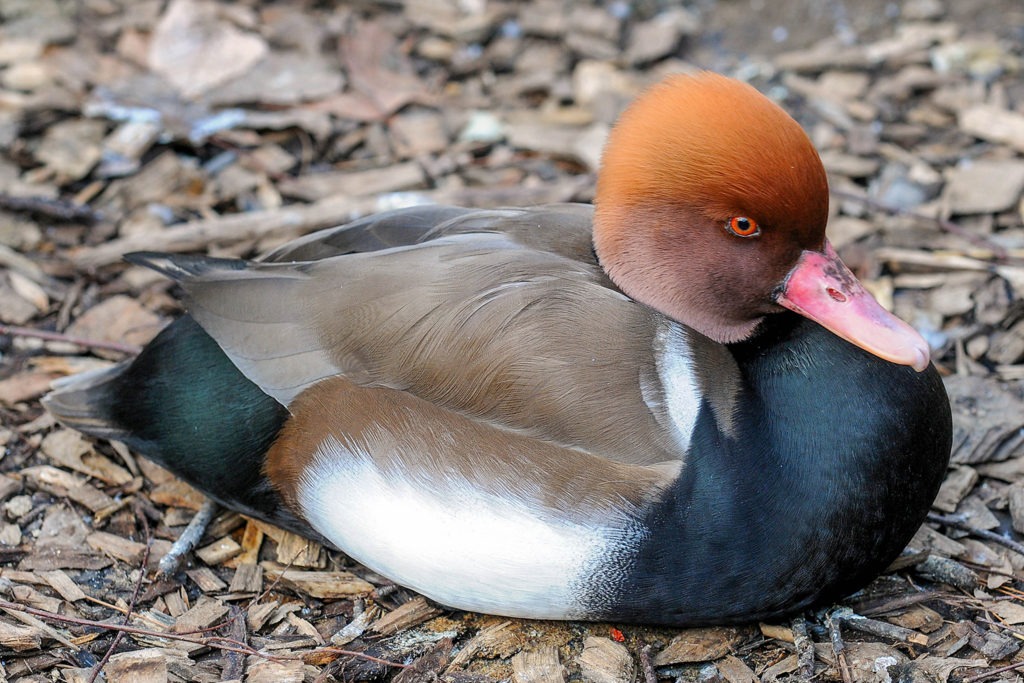Overview
“Where I live”
Red-crested pochards have an extensive but scattered range that includes parts of North Africa as well as Europe, the Middle East, Russia, India, and much of Asia. This species of duck seeks quiet waters such as inland lakes, slow-flowing rivers, and large lagoons with protective vegetation. While migrating or over-wintering, it also may roost and feed in estuaries, river deltas, and other sheltered coastal habitats. Check them out at the Aviary in the African Journey section of the Maryland Zoo.
“How I live there”
Red-crested pochards spend most of their time on the water or near the water’s edge. They may gather in small groups, and are most active in the early morning and evening. This “large and bulky duck,” as it has been described, will dive, dabble, and up-end for food. Red-crested pochards feed mainly on the roots, seeds, and vegetative parts of aquatic plants, and sometimes supplement their diet with aquatic invertebrates, amphibians, mollusks, tadpoles, or small fish.
“Making my mark”
The male is easily identified by its orange-brown “shaving brush” head crest, red beak, and pale flanks. The female is brown with pale cheeks.
Raising Young
Red-crested pochards go through courtship and pair formation starting in the fall and winter. Mated pairs arrive on breeding grounds in the spring. Each pair seeks a quiet, secluded site for nesting, usually well away from other pairs. Pairs conceal their nests under a bush or in dense vegetation on shore, or build them on floating mats of vegetation. They construct their nests of roots, twigs, and leaves.
The female lays a clutch of 6-12 eggs and incubates them for the next 26-28 days. She may leave the nest briefly to get food, but only she incubates the eggs while her mate stays nearby. Just as incubation nears completion, he abandons her to join other males at a common molting site. She will rear her ducklings for about ten weeks until they fledge (i.e. start to fly).
“What threatens me”
Like all ducks, red-crested pochards are vulnerable to many types of predator, ranging from foxes to snakes and turtles. Eggs and ducklings are at highest risk of predation. Other threats to this species include habitat loss and degradation (drainage or conversion of wetlands, water pollution) and over-hunting in some parts of its range.
Conservation
The IUCN, the world’s leading conservation organization, currently classifies the red-crested pochard as a species of “least concern” because it has an extensive range and a stable population base.
Taxonomy
- Kingdom: Animalia
- Phylum: Chordata
- Subphylum: Vertebrata
- Class: Aves
- Order: Anseriformes
- Family: Anatidae
- Genera: Netta
- Species: rufina


